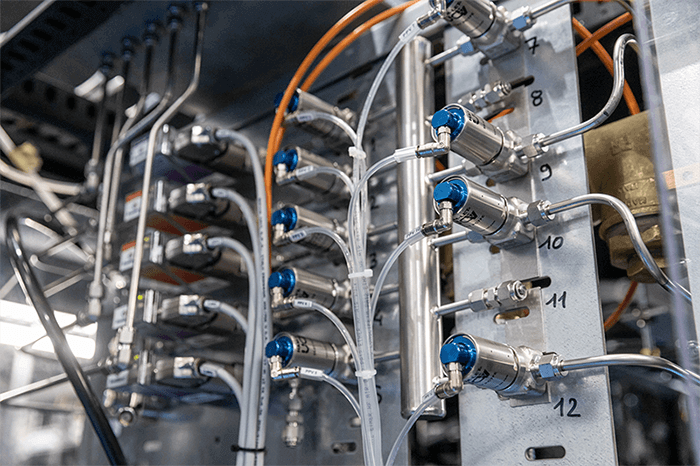About
We offer comprehensive solutions tailored to meet your needs for an end-to-end coating solution. From initial consultation to ongoing support, we are committed to providing exceptional sales and service to ensure the success of your operations.
What is PVD Coating?
PVD coatings are revolutionizing the manufacturing industry by offering unparalleled durability, performance, and aesthetics across a wide range of applications.
But what exactly is PVD coating, and how does it work? At Apex Coating Systems, we’re here to answer all your questions and demystify the science behind this cutting-edge technology. PVD coating is a vacuum coating process where material is vaporized from a solid source and deposited onto a substrate as a thin film under vacuum conditions. This process allows for precise control over the thickness, composition, and structure of the deposited film, resulting in coatings that are tailored to meet specific industry requirements.
But the benefits of PVD coatings go far beyond their technical capabilities. From enhancing product performance and durability to improving surface finish and environmental sustainability, PVD coatings offer a multitude of advantages for businesses across various industries.

Industries We Serve
Explore the industries we serve to learn more about the different types of PVD coating practical applications. Discover how PVD coatings can help you unlock new possibilities and achieve your business goals.
PVD stands for Physical Vapor Deposition, a process used to deposit thin films of material onto a substrate surface. During PVD coating, a solid material is vaporized in a vacuum environment, and then condensed onto the substrate, forming a thin, highly adherent coating. This process is commonly used to enhance the surface properties of products, providing benefits such as improved hardness, wear resistance, and corrosion protection.
PVD coating offers several advantages over traditional surface treatment methods such as electroplating and painting. Some key benefits include:
- Superior hardness and durability
- Enhanced wear and corrosion resistance
- Environmentally friendly process with no harmful chemicals
- Uniform coating thickness and coverage, even on complex geometries
- Ability to coat a wide range of materials, including metals, ceramics, and plastics
PVD coating technology is versatile and can be applied to a wide range of materials, including metals (such as stainless steel, titanium, and aluminum), ceramics, glass, and certain types of plastics. The suitability of a material for PVD coating depends on factors such as its thermal stability, surface cleanliness, and compatibility with the deposition process.
PVD coating is widely utilized across various industries for its ability to improve the performance and appearance of products. Some common industries that leverage PVD coating technology include:
- Automotive and transportation
- Aerospace and aviation
- Tooling and cutting tool industry
- Medical and healthcare
- Consumer electronics and appliances
- Architectural and decorative applications
Yes, PVD coating is considered to be an environmentally friendly surface treatment method. Unlike traditional plating processes, PVD coating is a dry vacuum process that does not involve the use of hazardous chemicals or produce toxic waste. Additionally, PVD coating systems are designed to minimize material wastage and energy consumption, making them an eco-friendly choice for manufacturers committed to sustainability.
TiN (Titanium Nitride) Coating:
- TiN coating is one of the most widely used PVD coatings due to its excellent hardness, wear resistance, and attractive gold color. It is often applied to cutting tools, molds, and components subjected to high wear and abrasion.
TiCN (Titanium Carbonitride) Coating:
- TiCN coating offers enhanced wear resistance and toughness compared to TiN coating. It is commonly used in machining applications where high-speed and high-temperature cutting conditions are encountered.
TiAlN (Titanium Aluminum Nitride) Coating:
- TiAlN coating combines the hardness of TiN with the high-temperature stability of AlN (aluminum nitride). It exhibits superior wear resistance and thermal stability, making it suitable for cutting tools used in high-speed machining of difficult-to-machine materials.
CrN (Chromium Nitride) Coating:
- CrN coating provides excellent corrosion resistance and oxidation resistance, along with good hardness and wear resistance. It is often used in applications where components are exposed to aggressive environments, such as automotive and aerospace components.
AlTiN (Aluminum Titanium Nitride) Coating:
- AlTiN coating is a multi-layered PVD coating that combines aluminum, titanium, and nitrogen. It offers exceptional hardness, heat resistance, and oxidation resistance, making it ideal for high-temperature machining applications and cutting tools.
DLC (Diamond-Like Carbon) Coating:
- DLC coating is a unique PVD coating that mimics the properties of diamond, including high hardness, low friction, and chemical inertness. It is used in applications where extreme wear resistance and low friction are required, such as automotive components, medical devices, and cutting tools.
